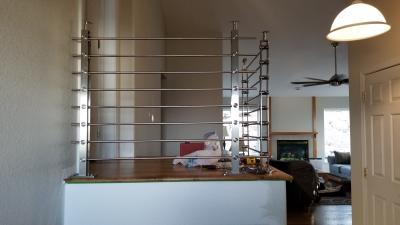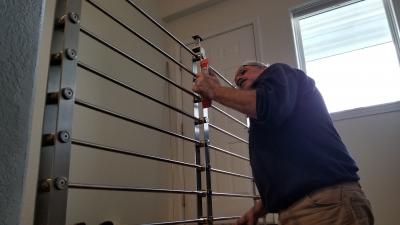Railing System Installation Instructions
1.0 Introduction
Thank you for choosing the Stainless Component Solutions (SCS) railing system for your project. These instructions cover basic general installation of the SCS railing system. Please read the instructions completely before beginning any installation, and always check with local city, county, and state building codes and regulations to ensure proper compliance.
2.0 Definitions
- Barrel: cylinder that holds the rods.
- Barrel set screw: screws on barrel ends that hold barrel in place on post.
- Post: the primary vertical supports, comprised of a base, cap, and two vertical runs held together by a number of barrels.
- Post base: the bottom (mounting) plate of the post.
- Post cap: the top (handrail mounting) plate of the post.
- Rod: horizontal retaining rods running from post to post.
- Rod set screw: the small screw in the center of each barrel, or at each end of a transition, used to secure the rod in place.
- Transition swivel: the rod connector swivel used to connect rods in corners and various other angle transitions (e.g. staircases).
3.0 Requirements
Before beginning installation you will need the following:
3.1 Hardware
- Post mounting hardware
- 3/8” stainless steel hex head fasteners
- Per application; lag bolt (3” minimum), wedge anchor, or screw
- Four (4) per post
- 3/8” stainless steel washers
- Four (4) per post (i.e. 1 per lag screw)
- 3/8” stainless steel hex head fasteners
- Post shims: additional stainless steel washers or stainless steel shims (as needed)
- Handrail mounting fasteners (stainless steel)
- Four (4) per post
3.2 Tools
- 4” or 5” grinder
- Several new .045”, 1/16”, or 1/8” cut-off wheels
- Drill and 3/8” bit
- 9/16” wrench (or ratchet and socket)
- Hex key (e.g. allen) wrenches, sizes:
- 2.0mm
- 2.5mm
- 4.0mm
- 5.0mm
- OSHA approved eye protection
- Speed square or adjustable square
- Torpedo level or equivalent
- Tape measure
- Painter’s tape
- Permanent fine tip marker
3.3 Optional Items
- Drill bit depth stop
- Or use your marker or painter’s tape as a substitute (at your own risk).
4.0 Pre-Installation
Caution: All abrasives and cut-off wheels must be new and unused. It is possible to contaminate stainless steel with carbon (mild) steel which creates rust points. This happens when an abrasive or cut-off wheel is used to cut the rods or is used on any stainless products after is has been used on carbon steel.
4.1 Layout
Remember: When placing posts, allow sufficient clearance for any wallboard, bull nose,trim, etc.
- Post spacing and placement:
- Recommended spacing: 48”.
- No more than 5’ apart.
- Place painter's tape strips at each desired post location, to mark post location during layout, and to preview for aesthetics.
- Corners:
- Recommended post hold off: 12”.
- Designed to have posts held off up to 18”.
- Post distances can be alternated, as long as either side is within 18”.
- Do not exceed a total of 36” between posts on a corner.
- Use transition swivels or welded corners to connect rods, remembering to face rod set screws downward.
- Stairs:
- To properly adjust first (bottom) rod height from stair tread, insert rod in bottom barrel over the entire stair run, and adjust post accordingly to achieve proper rod height.
- Connect stair rod runs to adjacent (e.g. level, adjoining stairs, etc.) rod runs using transition swivels. Adjust posts for desired clearance.
- Using your permanent fine tip marker, mark rod intersections for cutting, making sure to account for swivel depth.
4.2 Preparing Posts
- Using a 5mm hex key wrench, slightly loosen each post entirely, including all barrel set screws, making each post flexible enough to adjust, and plumb.
- Make sure each rod set screw (in each barrel) is completely recessed, to allow rod clear passage through barrel on initial insertion.
5.0 Installation
5.1 Setting Posts
Remember: Rods must run through successive barrels in a direct line, and all rod set screws must face down.
- Place posts in desired locations and mark anchoring locations with a pen.
- Pre drill holes, using drill bit depth stop to prevent overdrilling.
- Set anchors if necessary.
- Option 1 (if work area allows room for sliding rods through barrels):
- Place post plate flush to mounting surface, verify post is plumb.
- If post is not plumb, use wedges to bring the post to the correct mounting position.
- Tighten mounting plate fasteners.
- Place post plate flush to mounting surface, verify post is plumb.
- Option 2 (pre-assembly for tight quarters):
- Lay posts flat, and assemble railing section with rods through barrels.
- Tilt railing section up and into place.
- Plumb railing section posts.
- Tighten mounting plate fasteners.
- See also: 5.4 Installing Rods (below)
5.2 Rod Lengths
Remember: Always begin with the bottom-most rod, and work up. The bottom run of railing rod will serve as your template for the remaining (upper) rods. It is nearest to each post mounting plate, and therefore determines each ideal rod length, as there is the least amount of post ‘play’ (i.e. flexibility) closest to the mounting plate (i.e. footing).
Pro Tip: Complete the installation of the bottom-most run of railing rod prior to cutting all remaining (upper) rods, to ensure all measurements are correct before continuing to cut. (i.e. carpenter’s rule; measure twice, cut once.)
5.3 Cutting Rods
Remember: When cutting and deburring rods, always wear OSHA approved eye protection, and long-sleeve clothing.
Caution: Rods become sharp and hot when cut. Be sure to let them cool before deburring and / or dulling any edges.
- Use a 4” or 5” 110V grinder with recommended new cut-off wheel (see 3.2 Tools above). Follow all manufacturer’s instructions when cutting and deburring the 12.5mm solid railing rods.
5.4 Installing Rods
- Working upward from the bottom, one railing rod run (i.e. row) at a time:
- Slide rods through posts, remembering to face rod set screws (in barrels) downward.
- If using 5.1 Setting Posts: Option 2 (above) and tilting railings into place, ensure posts are plumb, and mounting plate fasteners are secured.
- Apply and fasten set screws on both ends.
- Do not yet tighten the remaining barrel and rod set screws between both ends.
- Install all rods into their locations, align corners, ends, and all points for uniformity.
- Tighten each rod set screw underneath each barrel in each post.
- Tighten each 5mm barrel set screw on each end of each barrel in each post.
5.5 Railing Cap
- Apply top cap using stainless steel hardware.
6.0 Post-Installation
6.1 Cleaning
- Use a stainless steel cleaner or simply wipe off with a moist cloth.
- Exterior railings can be sprayed with a garden hose nozzle attachment.
- If hard water deposits or other environmental blemishes appear they can be removed or cleaned by lightly rubbing following the direction of the “grain” with red Scotch-Brite™.
6.2 Care and Maintenance
- See our Railing System Care and Maintenance page for a complete guide to the proper care and maintenance of the SCS railing system.
7.0 Frequently Asked Questions (FAQ)
- Coming Soon
8.0 Additional Help
- Coming Soon
3.1 Hardware
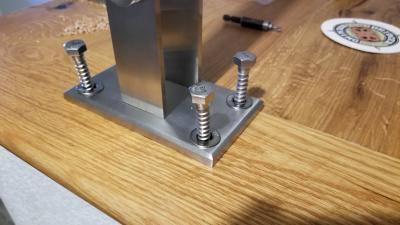
4.1 Layout
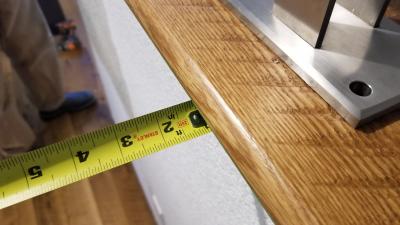
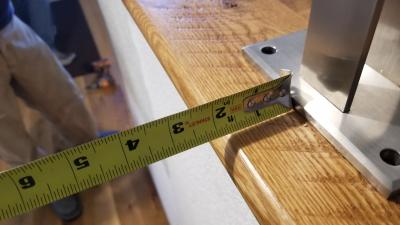
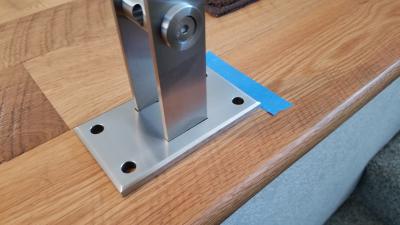
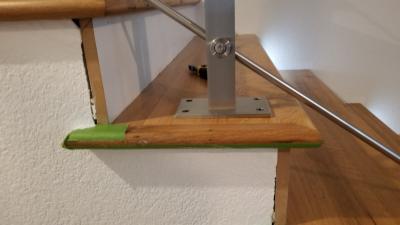
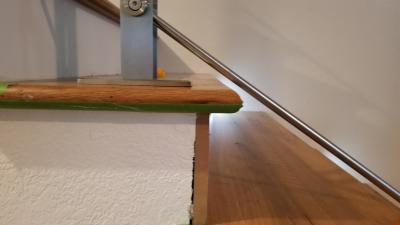
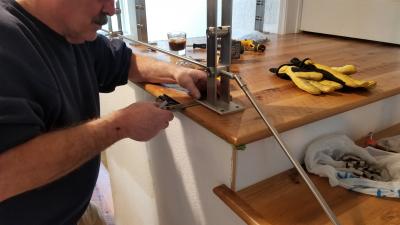
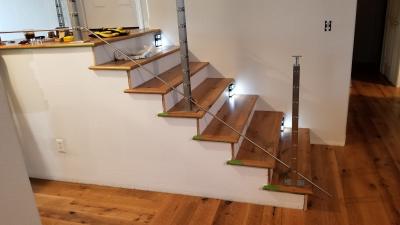
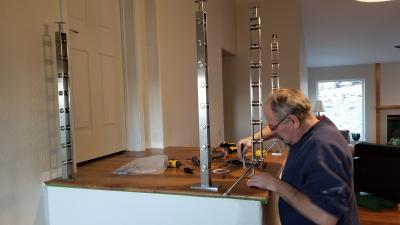
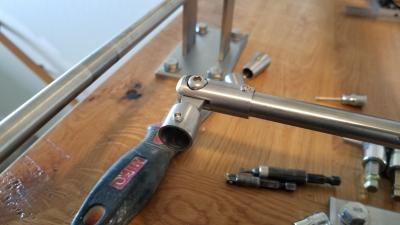
4.2 Preparing Posts
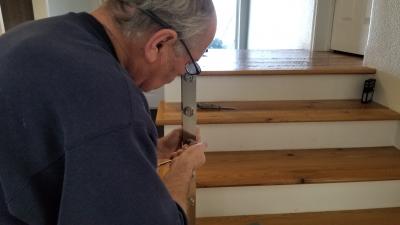
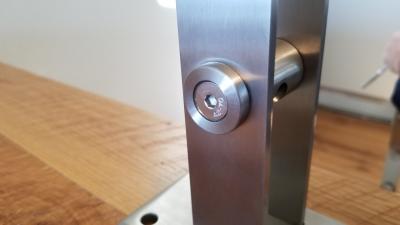
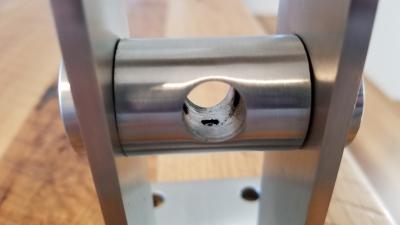
5.1 Setting Posts
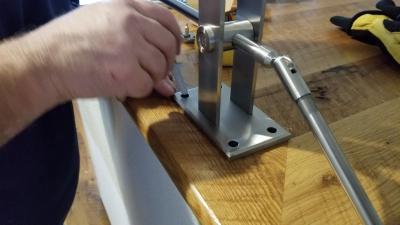
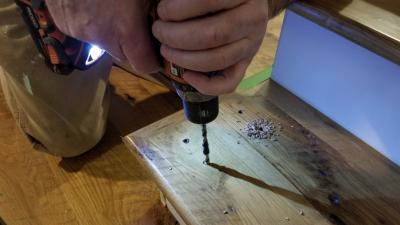

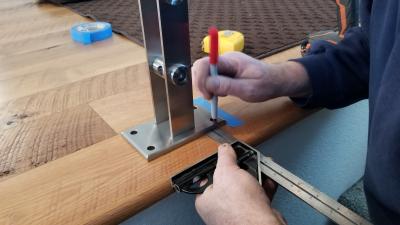

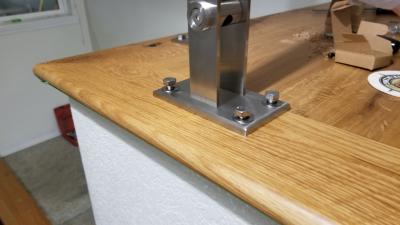
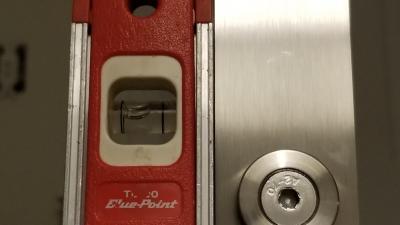
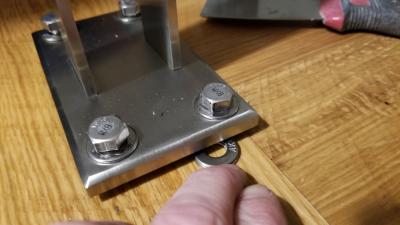
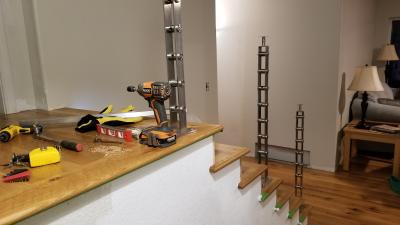
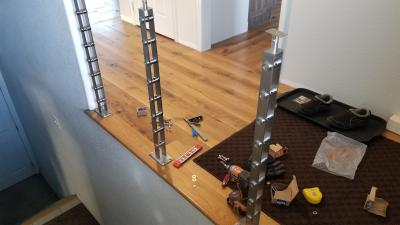
5.2 Rod Lengths
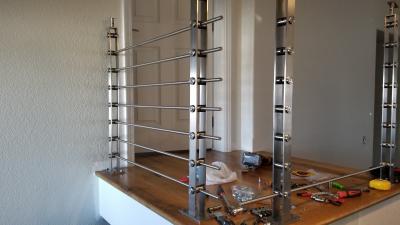
5.3 Cutting Rods
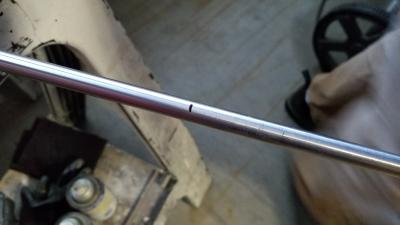
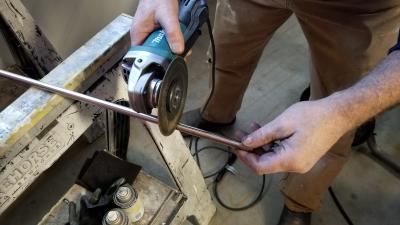
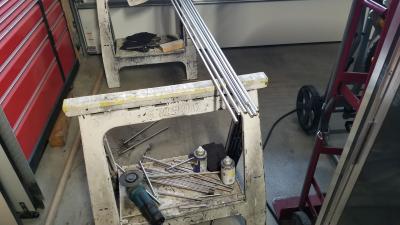
5.4 Installing Rods

